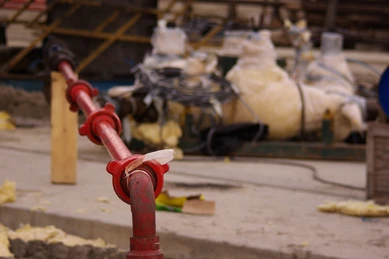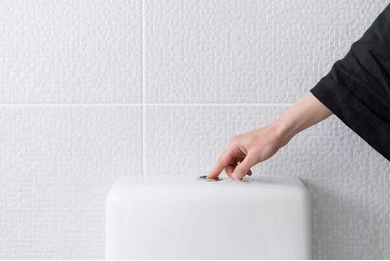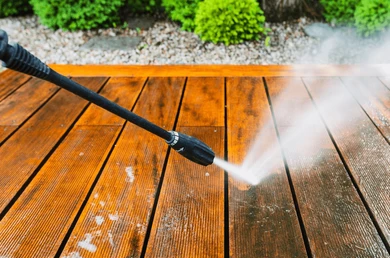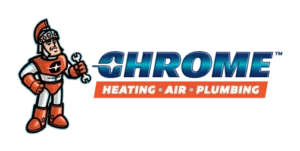Homeowners Should Hire a Plumber for Toilet Installation by Chrome Heating
Experienced do-it-yourself enthusiasts often undertake common projects such as installing new fixtures and faucets. Among these fixtures, toilets present the most challenges during installation. While the fundamental steps for toilet installation are clear-cut, there are numerous small details that only experience can teach—for instance, knowing the right amount of force to apply when tightening fasteners to avoid leaks without damaging the toilet itself, or understanding what to examine in the toilet flange to prevent future leaks from occurring. Before deciding to take on this task, consider the following points. This article will outline several key reasons why leaving your toilet installation to a skilled expert may be wiser. Picking The Right Toilet Toilet options Selecting the perfect toilet involves considering various options. When it comes to decisions, seeking advice from While features, style, design, and specifications provide basic information, a mechanic can offer insights on real performance. Questions like repair costs over time and overall reliability are crucial factors to take into account. The majority of individuals typically think about the appearance of things (such as height, shape of the bowl, finish, and size) before making a decision. Those with will scrutinize the technical details, such as water consumption, as well as easily overlooked aspects like the distance between the wall and the toilet’s mounting point, which can vary from 10 to 12 inches. But what happens when the “porcelain meets the tile”? Does it experience frequent clogs, or are there issues with hard-to-find replacement parts when repairs are needed? Plumbers, who deal with faulty toilets and components regularly, are uniquely positioned to guide on selecting truly dependable toilets. Chrome Air Conditioning, a plumbing company, emphasizes the importance of customer satisfaction. They specialize in Installation Toilet services, and installing toilets provided by customers in various locations such as Frisco, Plano, and Richardson. Chrome Air Conditioning offers advice on toilet brands and styles to avoid. Additionally, they carry a selection of toilets on their trucks that come with a two-year warranty. It is crucial to have confidence in the installation of toilets as they are service calls. While manufacturers provide warranties for the parts, they do not cover installation expenses or any home damage resulting from leaks. This underscores the importance of ensuring the proper installation of toilets. What Should You Check During Toilet Replacement? A part-swapper is a technician who lacks comprehension and accurate assessment of the system they are repairing. Instead of diagnosing the issue properly, they opt to replace the part that is commonly linked to the symptoms being displayed. When individuals lack the necessary knowledge or time to receive proper education about the system they are dealing with, they may resort to swapping parts out of necessity. While their repairs may succeed at times, there are instances when they may not work, leading to confusion about the reasons behind the failure. Conversely, a proficient and certified service provider examines various components to prevent potential future problems. This is particularly important during an installation toilet procedure, where understanding the system is crucial. An instance frequently seen is with the toilet flange’s positioning. When the flange is set too low, the likelihood of a leak at the wax ring seal significantly increases. Conversely, if the flange is positioned too high, it may cause the toilet to wobble or potentially break. Skilled plumbers take a comprehensive approach to toilet replacement, ensuring that the underlying issue is properly identified and resolved. Often, a toilet is mistakenly blamed for poor performance when, in fact, the root cause lies elsewhere, such as a mismatch between a low plumbing system. The installation toilet process requires careful consideration to avoid such issues. Skilled plumbers are trained to identify potential problems and ask the right questions to ensure that any issues are addressed promptly, providing homeowners with dependable service. Making Toilet Connections Correctly A common challenge in plumbing repairs is the absence of instant verification, making it harder to identify and fix. A leak indicates a problem when the water is switched on. However, it is not uncommon for us to encounter subpar installations in practical applications that seemed to function adequately for a period before failing unexpectedly and prematurely. Toilet installations involve various connections, such as supply lines, tank, and wax ring seals are improperly made, whether too tight or too loose, problems may not be immediately apparent. It could take months or even a year before damage from a slow leak around the flange becomes noticeable Similarly, loose tank-to-bowl connections might not leak until the toilet tank is accidentally bumped. The quality of plumbing installations, particularly toilets pass/fail assessment. Rather, the skill and attention to detail that goes into the installation plays a in determining its durability and overall performance. Skilled plumbers, such as those at Chrome Air Conditioning, are deeply committed to delivering exceptional craftsmanship in all of their projects. Upcoming Steps: At Chrome Air Conditioning, we’re renowned for our cutting-edge diagnostic and repair expertise, particularly in complex issues our capabilities extend far beyond specialized services, as we offer comprehensive plumbing solutions for all aspects of home improvement, from routine tasks like toilet installation to more intricate projects, all delivered with the same level of precision and care. For a reliable and worry-free toilet installation, backed by a reputable name and comprehensive warranty, consider reaching out to Chrome Air Conditioning – our team is here to assist you with.











